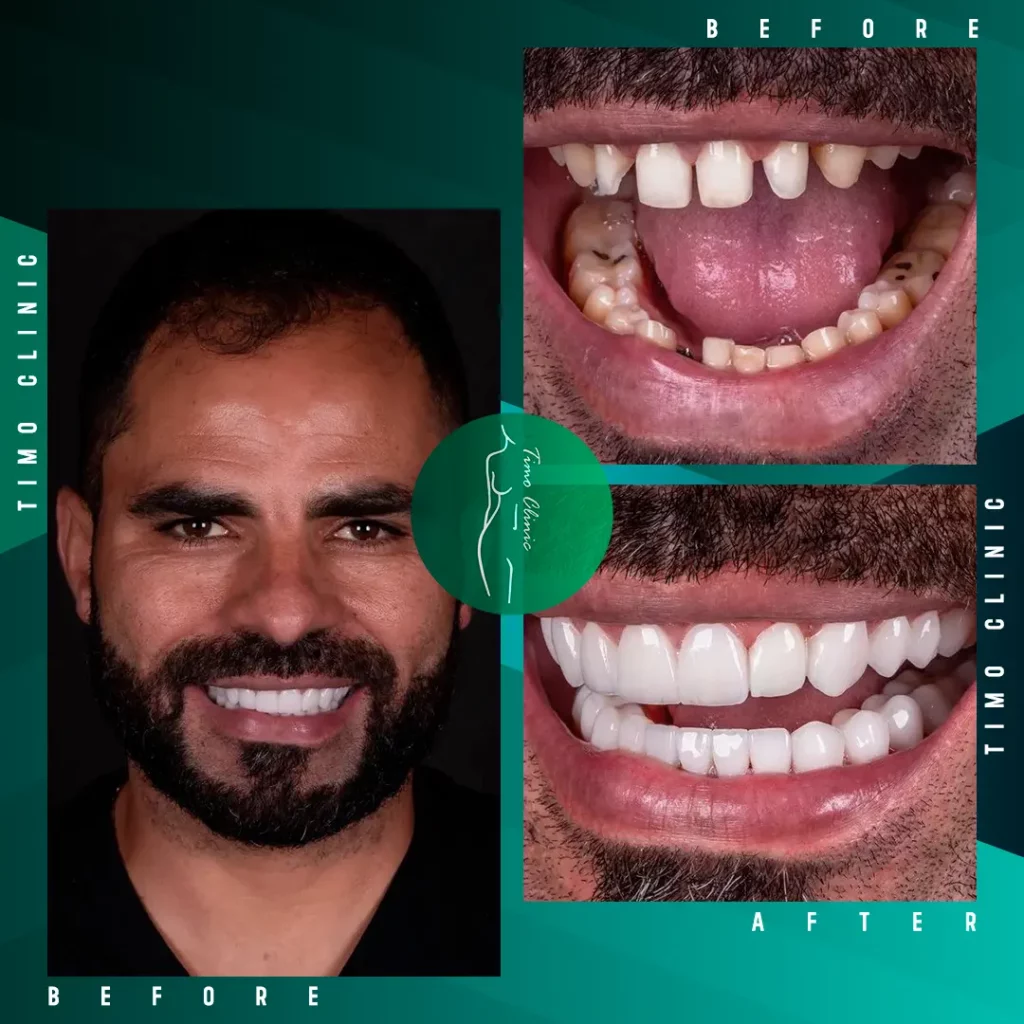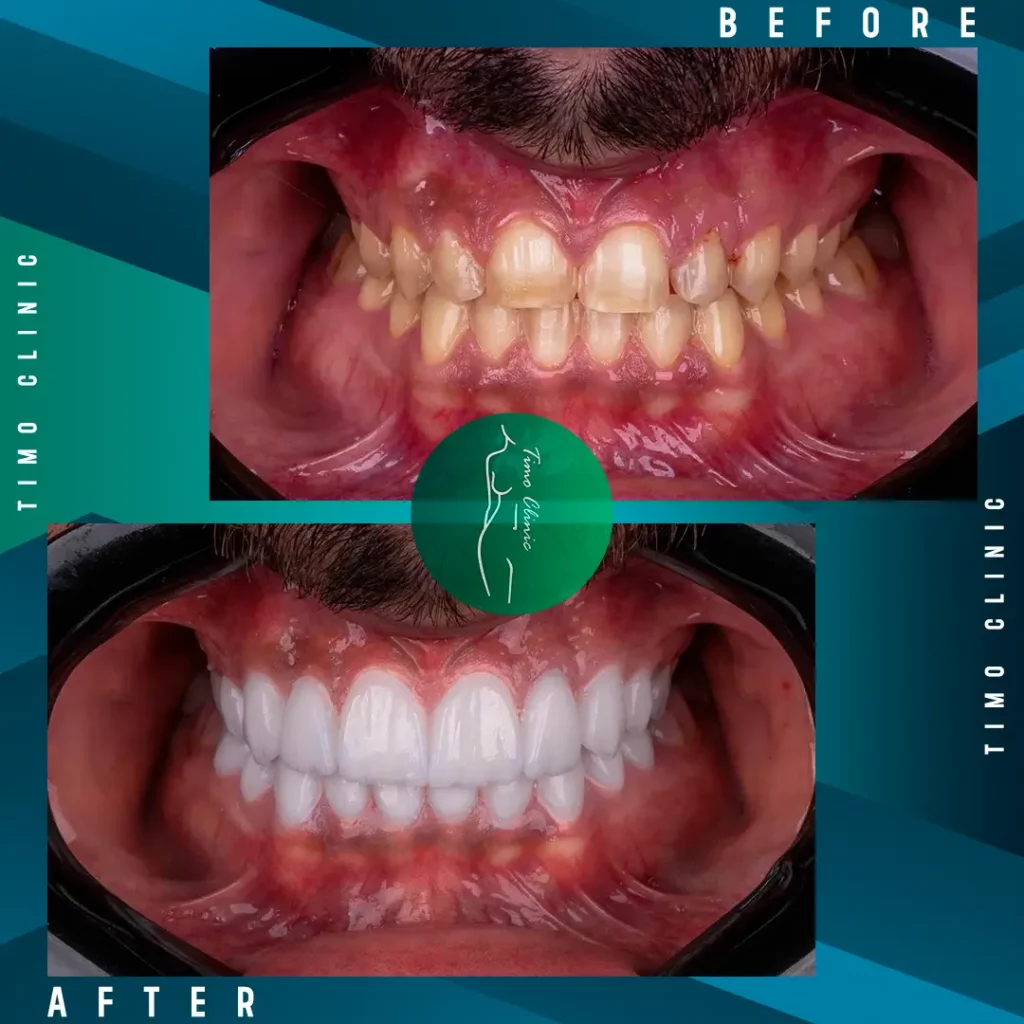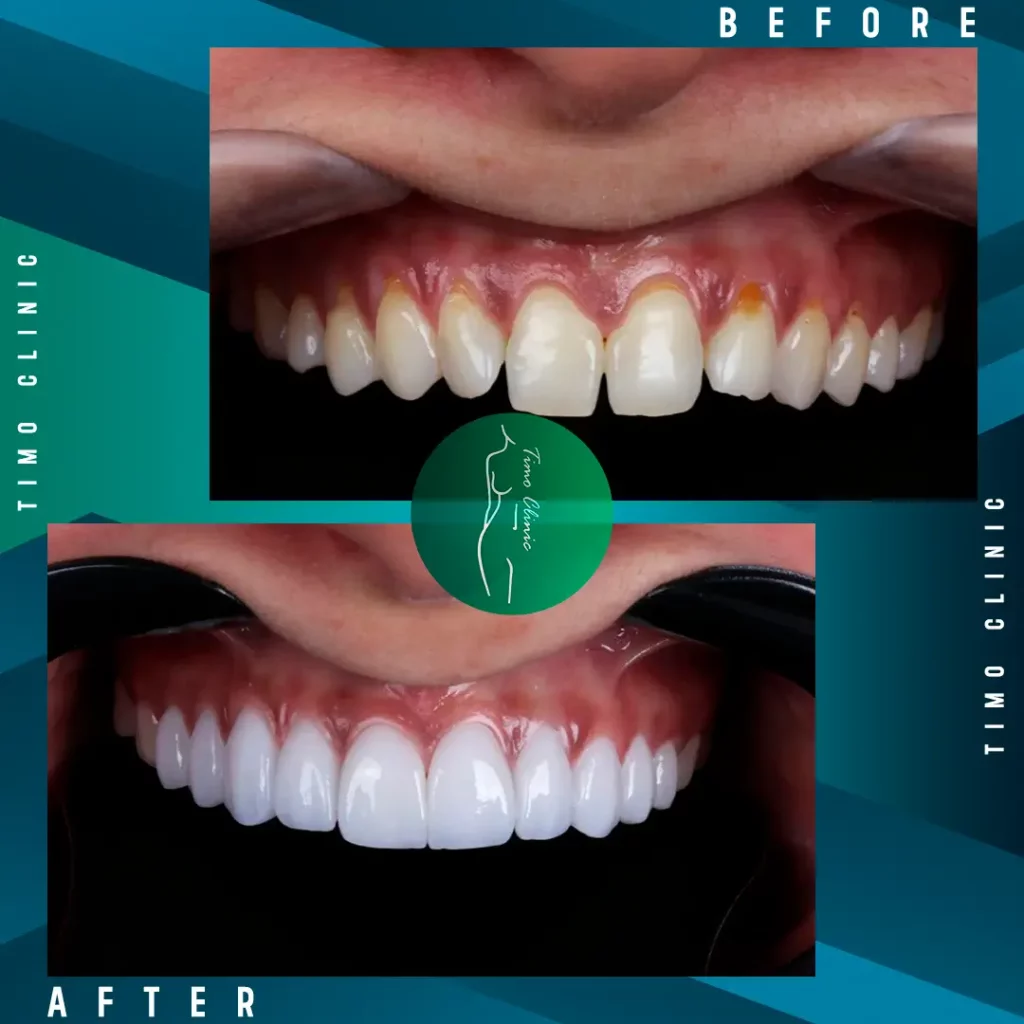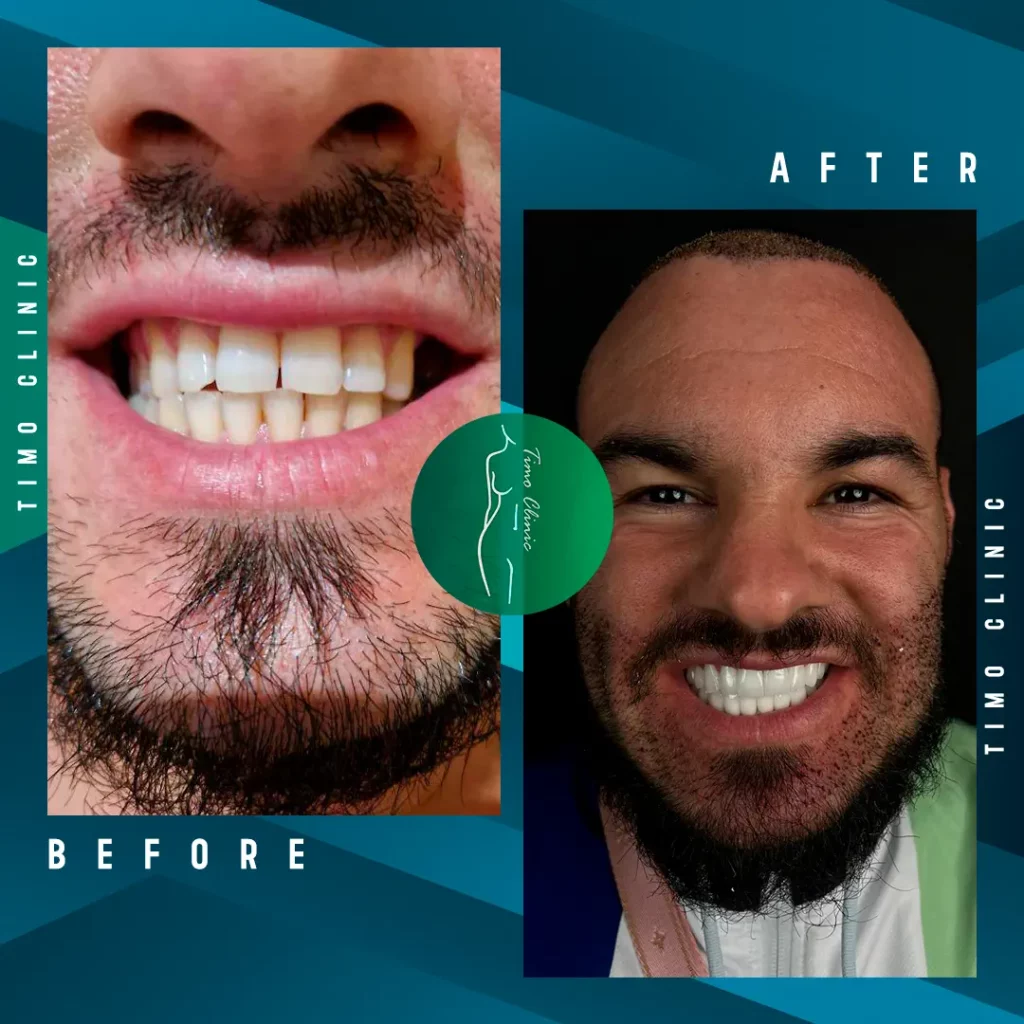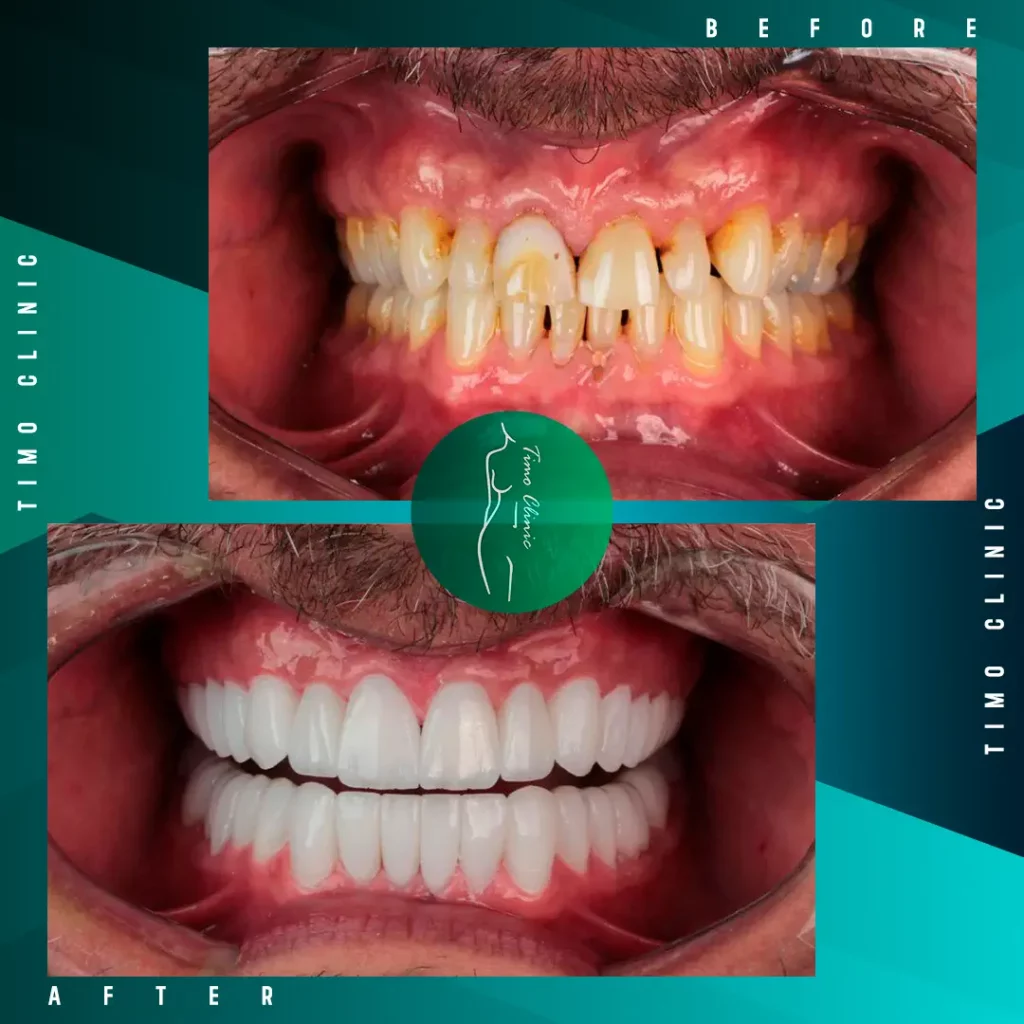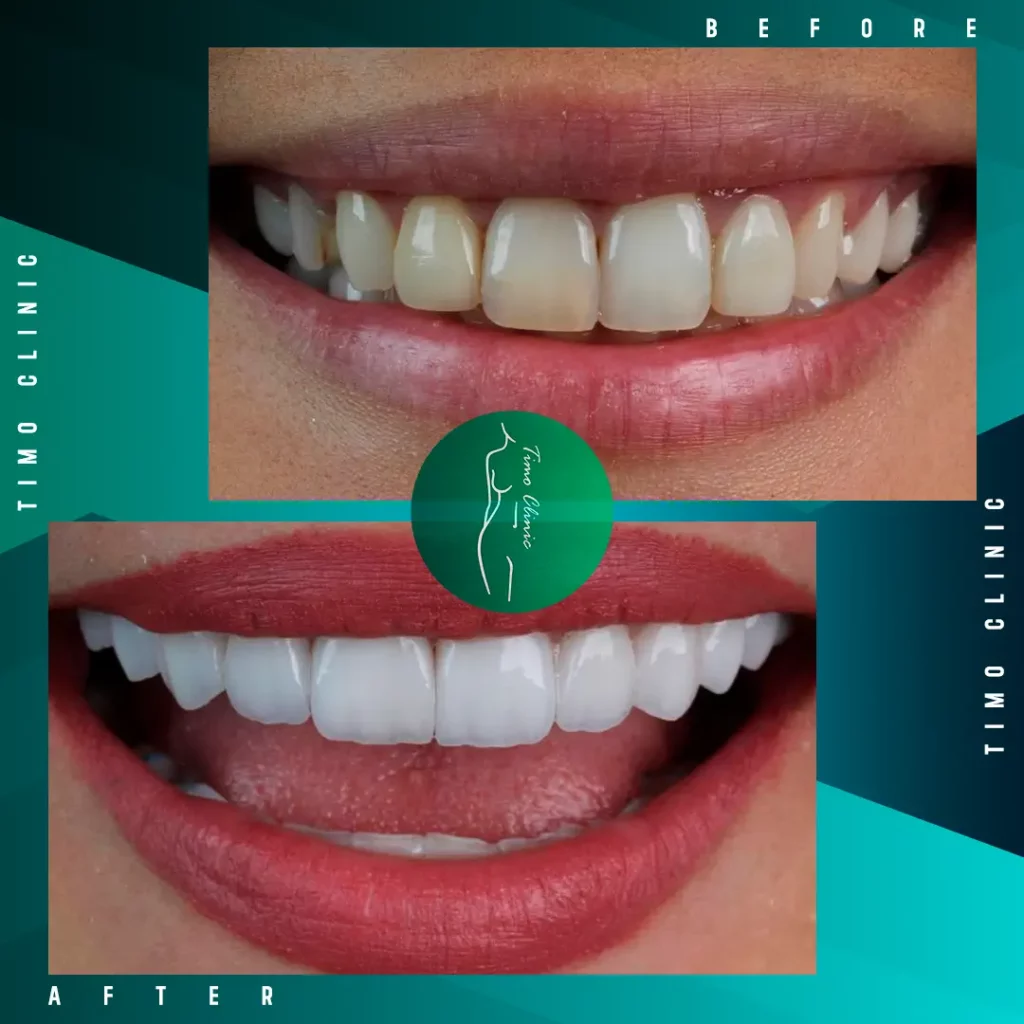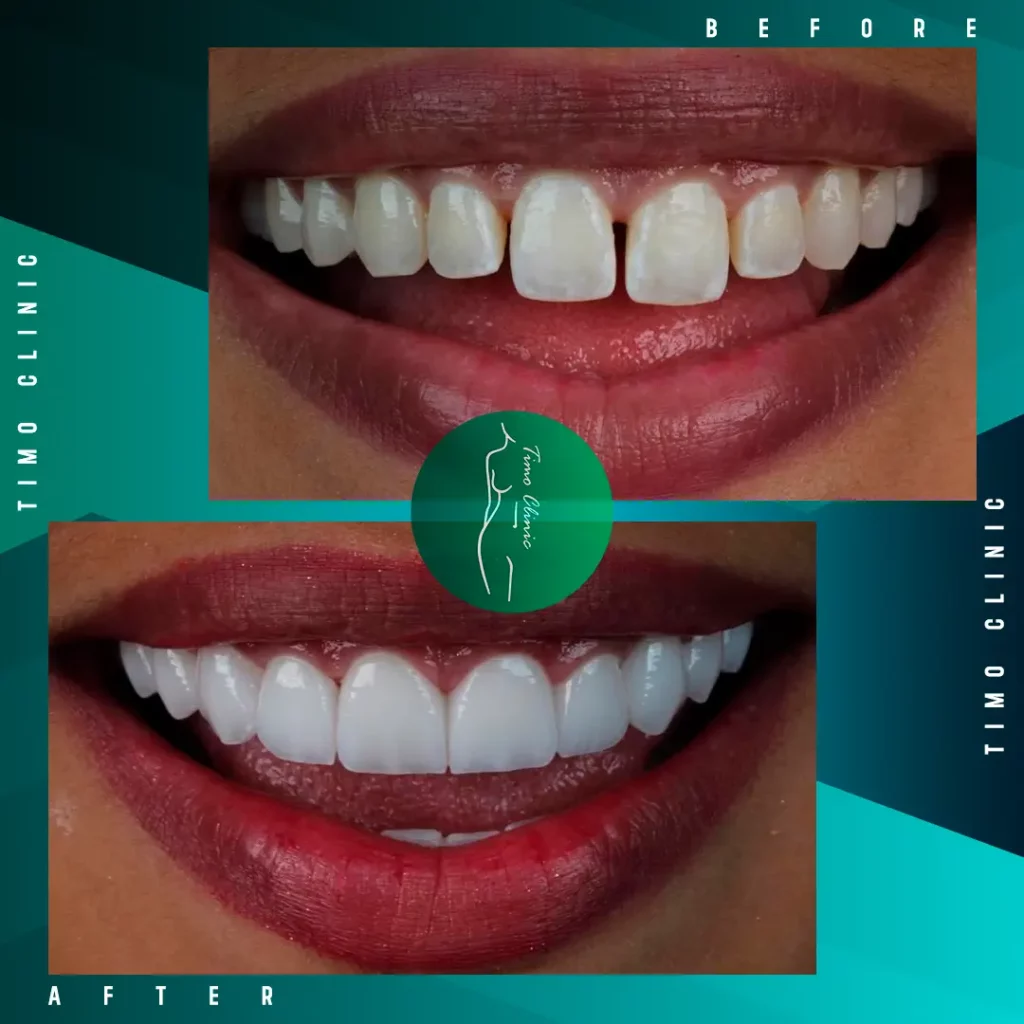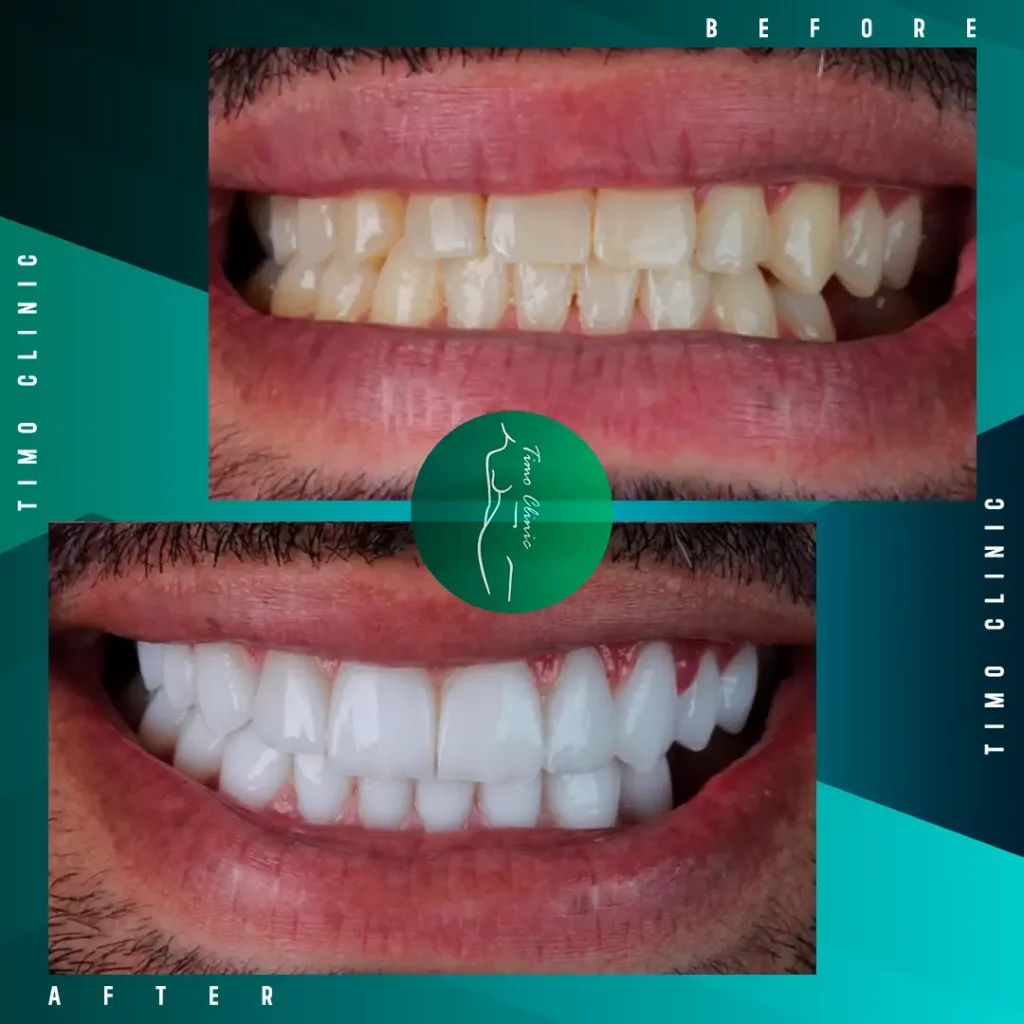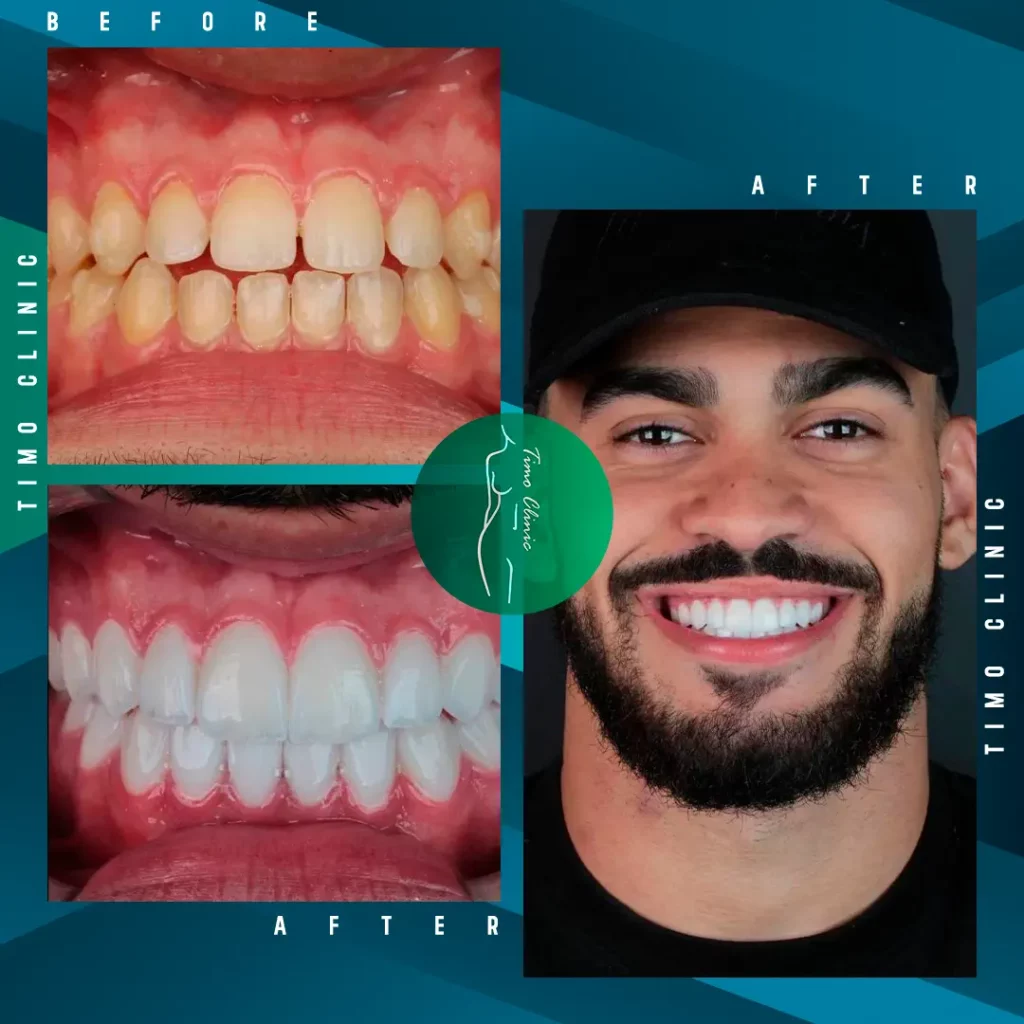Dental Implant
Having a good laugh, eating a delicious meal with friends or receiving a nice compliment – all these things make us feel good. Unfortunately, lots of people don’t feel they can live life to the fullest because of their missing teeth. And many more think dental implants and tooth replacement in many countries are not affordable options for them.
This is just not true in 2022. If you’re suffering with missing teeth, then your answer may be Smileworks Implants. As good as your natural teeth, titanium Implants are fitted into your bone and a new crown placed on top to create a beautiful, life-like appearance and a natural, long-lasting result.
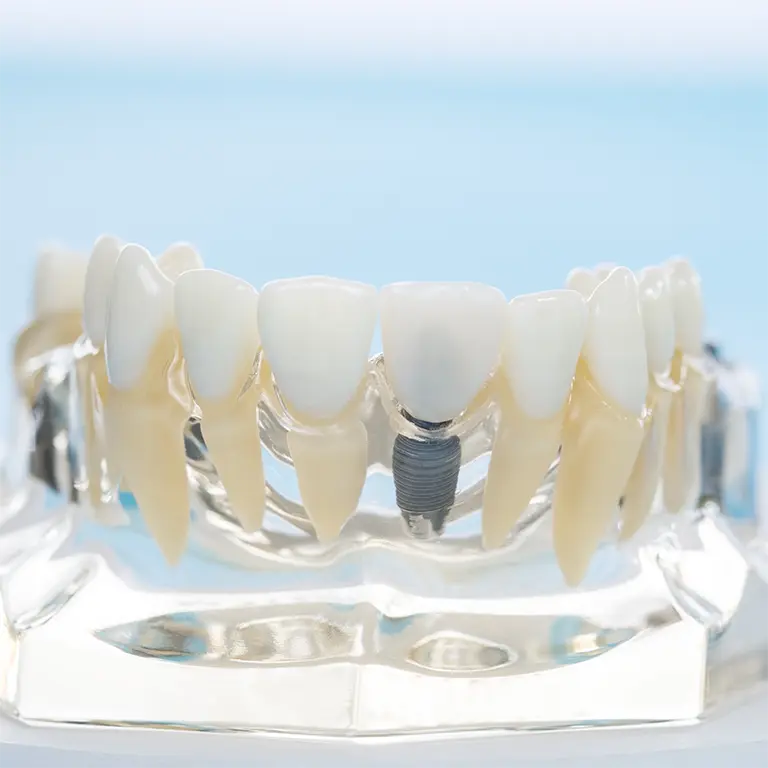
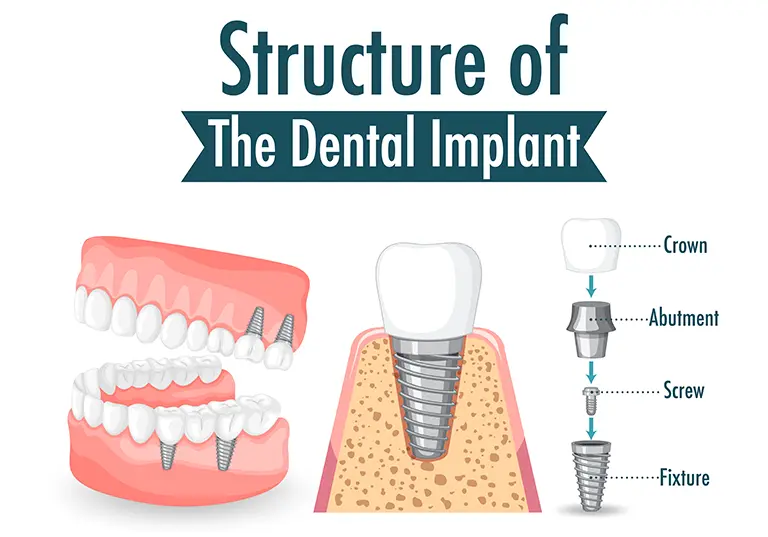
What is an implant?
It is a titanium screw system used to make prosthesis and crowns on implant tooth deficiencies. Dental implants placed in the jawbone act like a tooth root. In single tooth deficiencies, it is possible to complete the missing tooth without touching the adjacent healthy teeth, and it is possible to use fixed prostheses instead of removable prostheses in multiple tooth deficiencies with dental implants.
In which situations are implants preferred?
Teeth that should exist in the mouth during human life can be lost as a result of caries or gum disease due to insufficient care, genetic factors. As a result of these losses, gaps are formed in the mouth and disruptions begin in the chewing function. Although removable prostheses provide chewing to a certain extent, they bring discomfort and aesthetic problems with their use. Bridge systems, on the other hand, cause damage to the adjacent healthy teeth. Because of these negative reasons, implant systems replace lost teeth. In single tooth deficiencies, it is possible to complete the missing tooth without touching the adjacent healthy teeth. İt is possible to use fixed prostheses instead of removable prostheses in multiple tooth deficiencies through dental implants.

Who is a Suitable Candidate
Determination of bone suitability must be done by a maxillofacial surgeon using 3D tomography. Otherwise, forward-looking problems may be experienced in diagnoses made with classical x-rays.
The patients have to avoid who have an important systemic disease and who have received radiotherapy or chemotherapy in the recent period. It may vary in healing processes in diabetic patients. However, if the disease is controlled, implant can be applied to anyone. If sufficient bone is not detected in the examination, implants can be placed after the bone level is created with additional procedures.
In patients with high levels of diabetes and a recent heart disease, written consent is obtained by asking their doctor. If the disease is under control, implant can be applied to anyone.
How long will these processes take?
For an experienced surgeon, the average application time of 1 implant is 15-20 minutes. Afterwards, there are waiting times for the continuation of the treatment. The implants are expected to fuse with the bone for an average of 3 months in the upper jaw and 3 months in the lower jaw, and crowns are made on them. If additional procedures are applied in the presence of thin or insufficient bone (bone dust addition, sinus lifting, etc.), the waiting period may be extended up to 6 months. The presence of different metabolic diseases that vary from patient to patient may cause changes in these periods.
How are the surgery processes of dental implants done?
These operations, which are performed under local anesthesia (as in filling, root canal treatment and tooth extraction), are painless only by numbing the area where the dental implant will be made.
Implant is not necessary for each missing tooth. In cases of full edentulousness, it is generally preferred to apply 6-8 implants to the upper jaw and 6-8 implants to the lower jaw.
The healing process is overcome by taking the prescribed medications before/after the operation, using antiseptic mouthwashes after the procedure and good oral care. The patients who use blood thinners etc. medications should definitely inform their dentist about these conditions before the procedure.
After the procedure, slight swelling or color changes are expected on the cheek, but the edema will decrease rapidly with the application of cold pads for the first 24 hours. Severe pain is not observed.
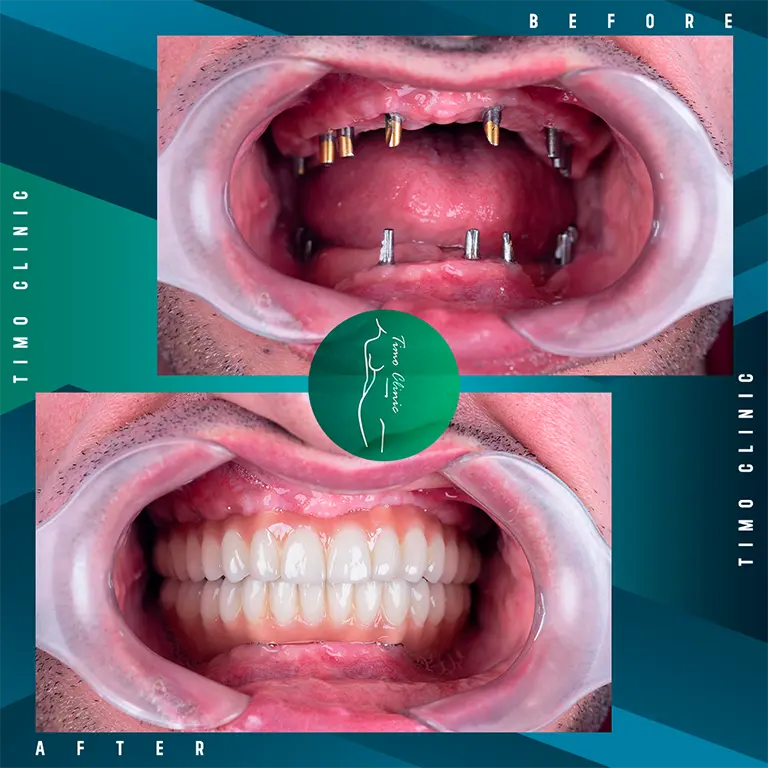
What is sinus lifting?
Sinus lift is a special type of oral surgery. It is recommended if the patient’s bone is not suitable for implantation. In this case, bone grafting is recommended. The sinus lift is a special case of bone grafting. Oral surgeons use bone grafting materials to increase the height of the upper jaw. This may be necessary if the upper grinding jaw is not wide enough to hold the implants.
It may happen that the area of the missing tooth was not handled at the site of the small and big grinding site. This can easily lead to osteoporosis, bursting, resulting in the lowering of the sinus.
Thus, it is especially important in case of implanting to have the bone in the correct height and condition to prevent the sinus opening during oral surgery. To avoid such complications, this kind of oral surgery is nowadays a routine intervention. It is made in 2 methods, open and closed.
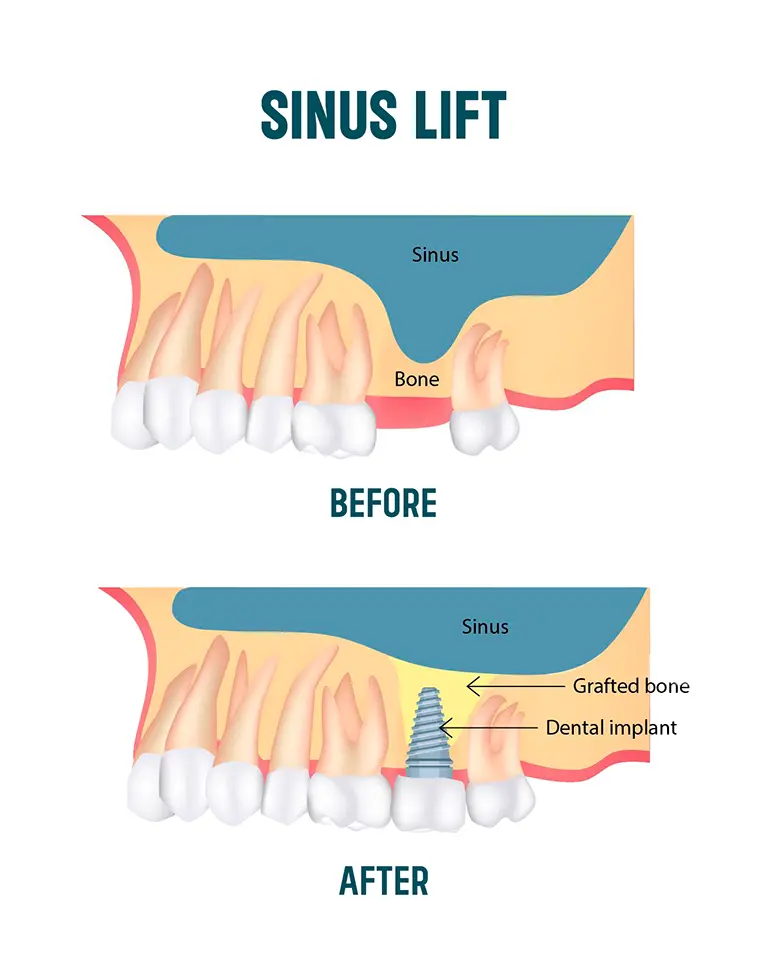
How are sinus lifting operations performed?
Two types are distinguished: the closed or open sinus lift. There is no reason to worry, because the local anesthesia makes the intervention painless.
Closed sinus lift or crestal sinus lift
This type of sinus lift is recommended in case of less bone loss. Through the site of the planned implant, bone grafting material is inserted into the sinus cavity and its passages. The bone grafting material is incorporated into a bone-like hard material over time, and it is embedded into it. So it can be safely implanted.
Opened sinus lift or lateral sinus lift
This procedure is performed in case of a larger amount of bone missing. It is a bit more complicated than the closed sinus lift, as the bone grafting area is also bigger. Our dental surgeons open the sinus through the gums. Place the bone grafting material there until it reaches the desired height. It is covered with a special membrane, which also helps the healing.
What is the process of bone graft?
Bone grafts called bone powder are obtained in various ways. Human-derived, animal-derived or synthetically produced grafts are produced in the form of small-particle powder or as a block.
Bone grafts are used in the presence of insufficient bone in the area where dental implants will be made, situations where implant is desired to be made in the same session with tooth extraction, pre-implant sinus floor lift operations or during extraction of teeth that cause chronic inflammation and cause bone to melt by staying in the mouth for a long time. It helps to heal this area faster and increase bone volume.
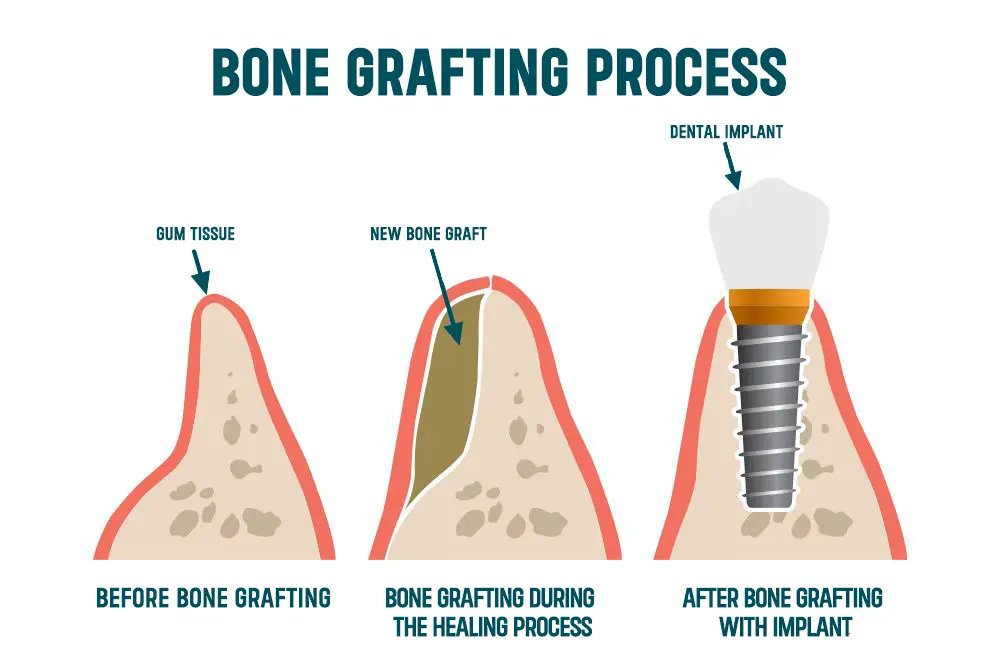
Timo Clinic
We enjoy providing the benefits and improved quality of life that surgeries can give to you. We offer the most advanced form of services, making these procedures available to the widest variety of patients possible. Please contact us today to schedule your consultation.
- Phone: +90 544 762 98 71
- Location: Kağıthane, İstanbul, TURKİYE
- Mon - Fri: 9:00 am - 5:00 pm

